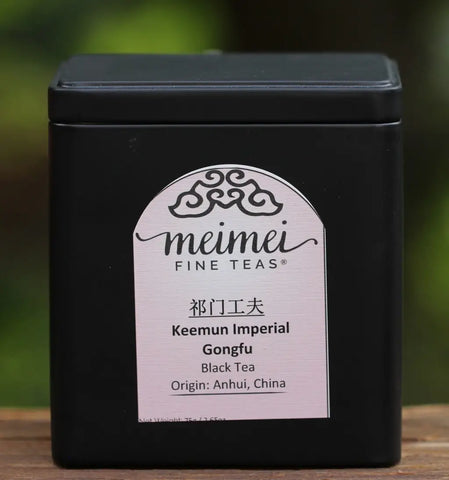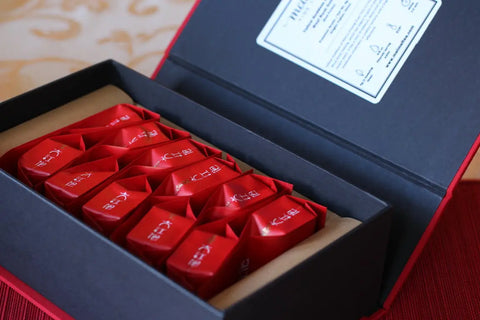
Tea Storage 201: Properly Storing Your Tea
In our previous two posts, we looked a little at what oxidation means and at how tea is processed and prepared. In today’s post, we’re going to continue to apply some of that knowledge so that you become aware of the best conditions for storing each tea.
As a friendly reminder, the three things we’re trying to avoid when storing tea are: (1) light, (2) oxygen, and (3) moisture. We might also want to add two more factors that can affect tea quality but are sometimes overlooked.
The first is heat. The warmer the temperature of the environment in which tea is stored, the faster the tea will break down and degrade. The opposite is also true: the cooler the temperature of the environment in which tea is stored, the slower the enzymatic activity takes place that causes your tea to break down and degrade.

While this might seem to suggest that freezing would be optimal for storing teas that you want to preserve, this is not recommended for several reasons. One, unless you are certain that your tea is in a 100% airtight container, you risk your tea leaves suffering from freezer burn, which will ruin the tea altogether. Two, freezing causes condensation to occur when you bring your tea back to room temperature. This increases the chances that moisture will get into your tea, which again can ruin your tea.
The second factor to discuss is strong aromas. Tea leaves tend to absorb strong odors very easily, and so for this reason, you want to be very careful about where you keep your teas. Storing them in a spice cabinet, next to odorous vegetables like onions or garlic, or even next to strongly scented teas is a very bad idea. We encourage you to try to be mindful of where you decide to store your teas.
Keeping the above factors in mind, the information below assumes that you are using a resealable bag or airtight container that blocks out light, has eliminated as much excess air as possible, and is free from condensation. It also assumes that your ambient temperature does not exceed about 75°F (25°C).
What kind of storage conditions do we recommend for each kind of tea? Let’s take a look:
Green Tea: Because green teas tend to be more delicate and tend to oxidize more quickly once exposed to light or air, we believe it is best to try to slow the enzymatic activity of green tea as much as possible without freezing it. For this reason, we usually recommend keeping your green tea in a refrigerator in order to help it last the longest. Watch for condensation buildup or other accidental exposures to moisture, and be sure that as much air has been eliminated from your storage as possible before placing it back in the refrigerator.
Yellow Tea: Since yellow teas undergo more processing and preparation in their craft than green teas, they tend to be a little more resilient. You can safely store these teas at or below room temperature as long as they are in an airtight container.
White Tea: While white teas are the least processed in their preparation, they actually make great candidates for aging. We believe that white teas even taste best when introduced to aging. If you prefer the way that your white tea tastes fresh, then you can store it like you would a yellow tea. However, if you want your white tea to age a little, feel free to introduce it to a slightly humid environment and a little bit of air flow. The humidity shouldn’t be too low that it discourages natural fermentation but it shouldn’t be too high that it encourages mold growth. As for air flow, an aging box kept in a well-ventilated area is always a good option. Ambient temperatures should be kept relatively stable, but can vary from about 65-85°F (20-30°C).
Oolong Teas: Oolongs are a little trickier to store since they vary so much in their levels of oxidation. Some are lightly processed and tend to be rather close to green teas, but others go through several deep roasts, developing a hardiness seen in black teas. For this reason, the answer to how to store oolongs is, “it depends.” If your oolong is lightly oxidized, then consider storing it like a green tea, but if your oolong is darker and roasted, then consider storing it like a white tea. You may even want to age it like a white tea if it seems like a good candidate for aging.

Black Teas: As long as the storage conditions are dry and the ambient temperature is reasonable, black tea can be stored for a long time without losing too much flavor or becoming stale. Keeping black tea in an airtight container prolongs their life even more.
Puerhs: Puerhs are a fun exception to every category of tea because it’s all about aging. Though we can age white and oolong teas, we don’t have to, but a puerh is defined by the aging process. For that reason, we want to store our puerhs in a way that works harmoniously with the aging process. Purchasing an aging box is always a good idea. The next step is to make sure we find the right level of humidity, find a well-ventilated area, and find the right temperature.
Knowing more about how our teas are made and what affects our teas helps us realize how to get the most out of them. A key part of that is proper storage, and with the above information, you can ensure that you will be enjoying your tea at its best!
